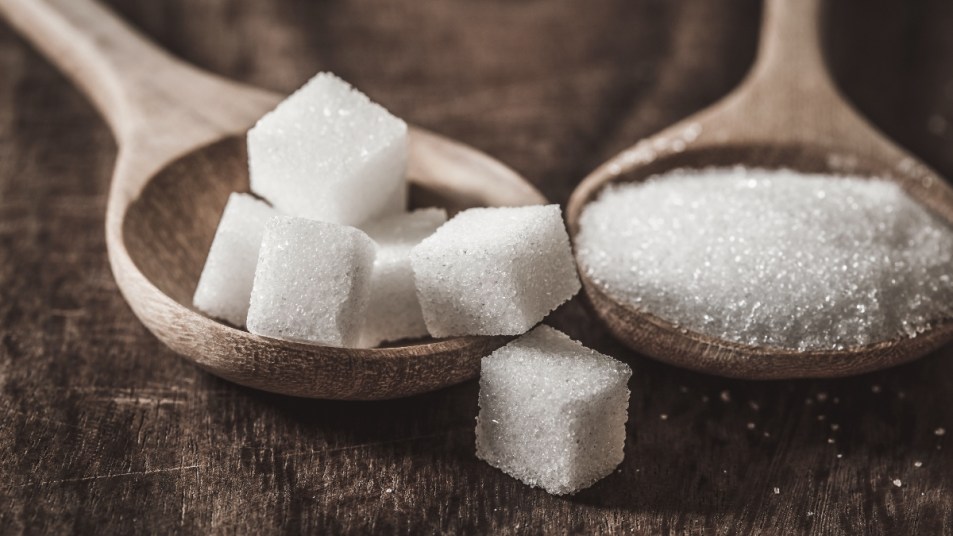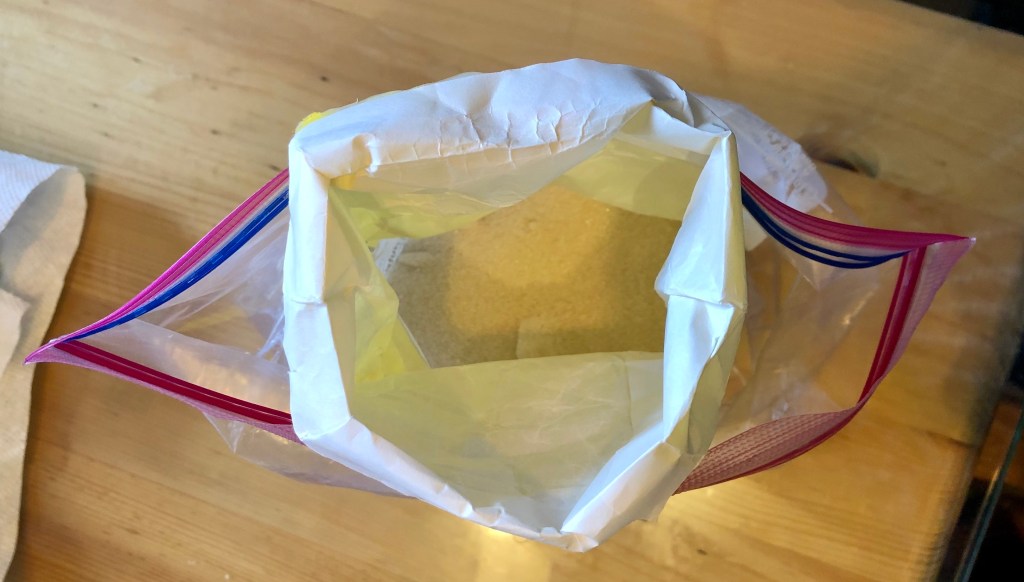I Accidentally Discovered the Best Hack to Soften Rock-Hard Sugar in a Paper Bag
If you can't get the sugar out of its paper bag, grab a gallon Ziplock.

It happens to all of us: You forget to transfer your sugar to an airtight container and next thing you know, it’s rock-solid and you’re stabbing at it with a butter knife.
This was the situation I found myself in about a month ago. I’m a forgetful baker (if you could call me a baker), and tend not to think of transferring dry ingredients to durable containers until it’s too late. My bag of granulated sugar had therefore turned to stone, so I sighed and scraped at its contents with various utensils to no avail. Deciding I’d deal with it later, I gave up and opened a new bag. But to my surprise, I later came across a hack that could’ve miraculously solved this problem. To follow my journey, keep reading.
A Simple Way to Soften Sugar
A few weeks after the hardened sugar incident, there was another unpleasant surprise: A trail of ants was marching toward the sugar rock on my counter. Eeek! I set out a couple ant traps, then sealed the sugar bag in a gallon-sized Ziplock. Another week or two went by. By this time, I’d finished the replacement sugar and needed more for a pumpkin bread recipe. So I opened the Ziplock with the sugar rock inside, ready to break out a sledge hammer, and stopped in my tracks. The bag caved inward when I grabbed it.
I opened the paper bag, peered inside, and to my amazement, the granules were soft. I scooped out half a cup of sugar with ease. Had I really just stumbled upon an easy way to soften hard sugar?

It turns out I’m no genius; plenty of sources recommend putting white sugar in a tightly sealed container. Why? When moisture from humid air seeps into sugar, it causes clumps to form, turning it into cement. A tightly sealed container therefore controls the environment and keeps moisture at bay. However, none of the hacks I had tried from other sources worked, until I tried sealing the whole thing inside a gallon Ziplock. Putting a slice of bread in the bag did nothing — perhaps because the paper bag was too airy for the bread to soak up the moisture. And I couldn’t put the sugar in the microwave or oven, because it had glued itself to the paper. Yet, the Ziplock trick was easy and effective.
What about brown sugar?
What about brown sugar, you might ask? Hardened brown sugar has the opposite problem — it doesn’t have enough moisture, because dry air made it evaporate. I ran into this dilemma as well, even though I had put my brown sugar inside a glass jar. (It didn’t have as tight of a seal as advertised.) Since I couldn’t claw the sugar out of the jar, I put the whole jar inside a plastic tub with a locking lid. Next, I followed Domino’s advice, and put a layer of plastic wrap over the brown sugar, then damp paper towels on top. (The plastic wrap prevents the damp towels from directly touching the sugar.) In about three days, My brown sugar was once again soft.
Up next on my to-do list? Finding tight-sealing jars. If you have a trusted brand, let me know.
















